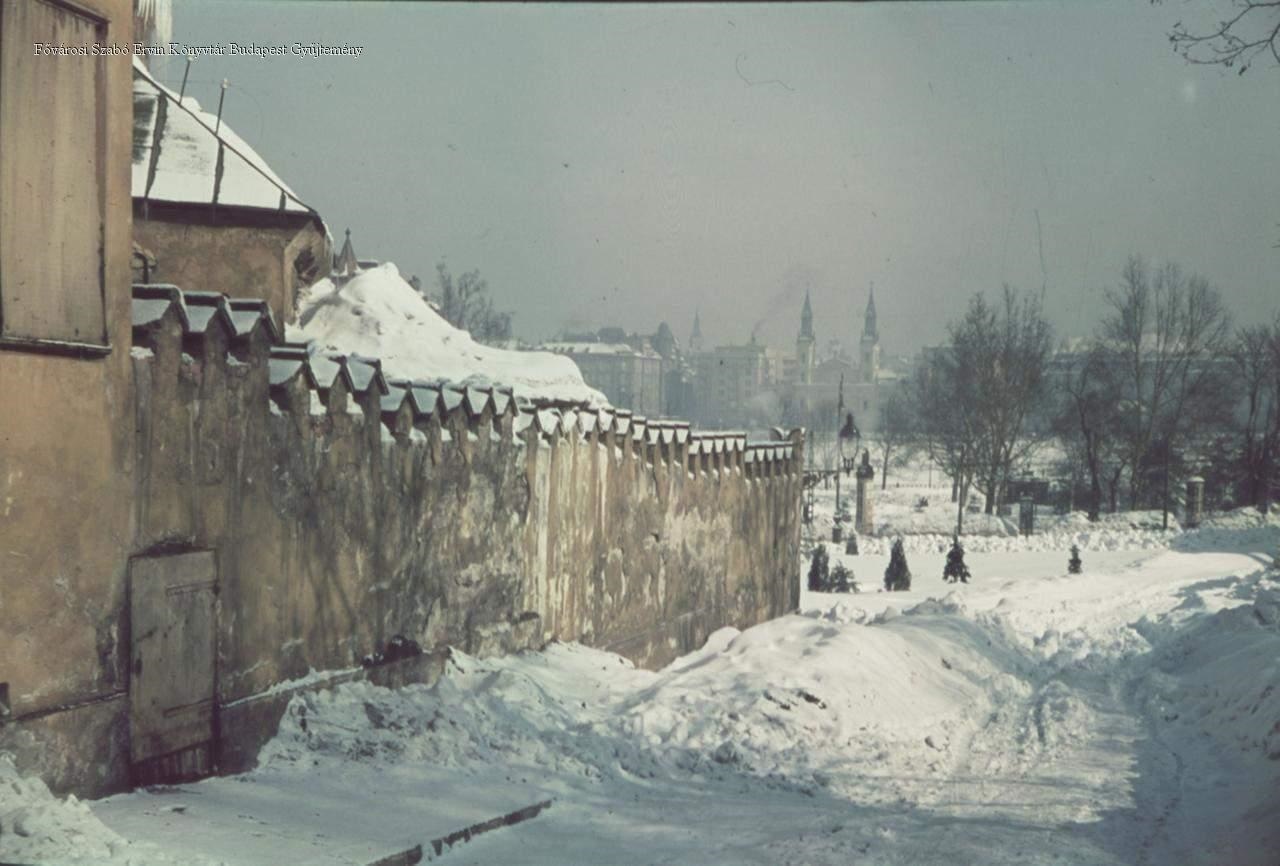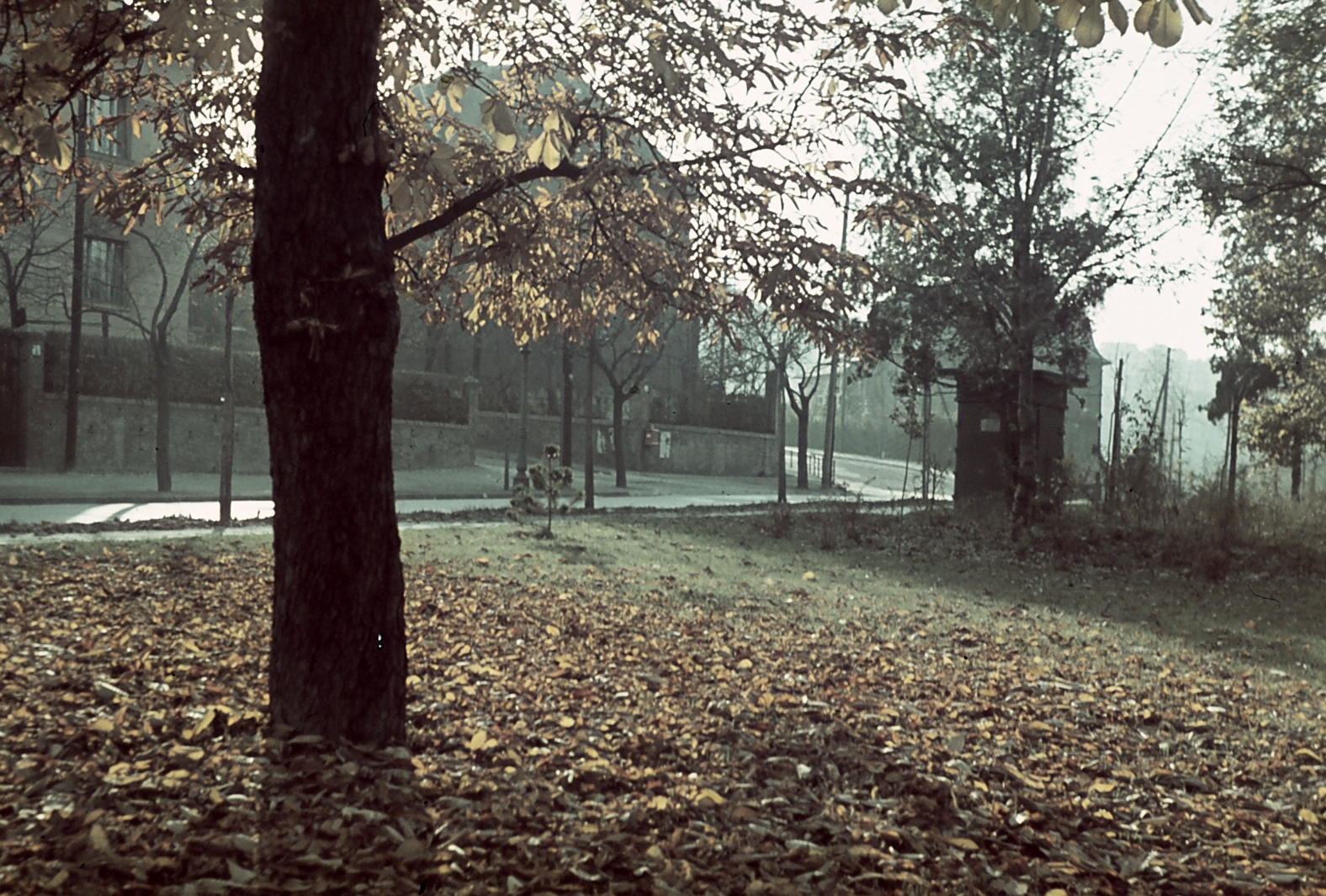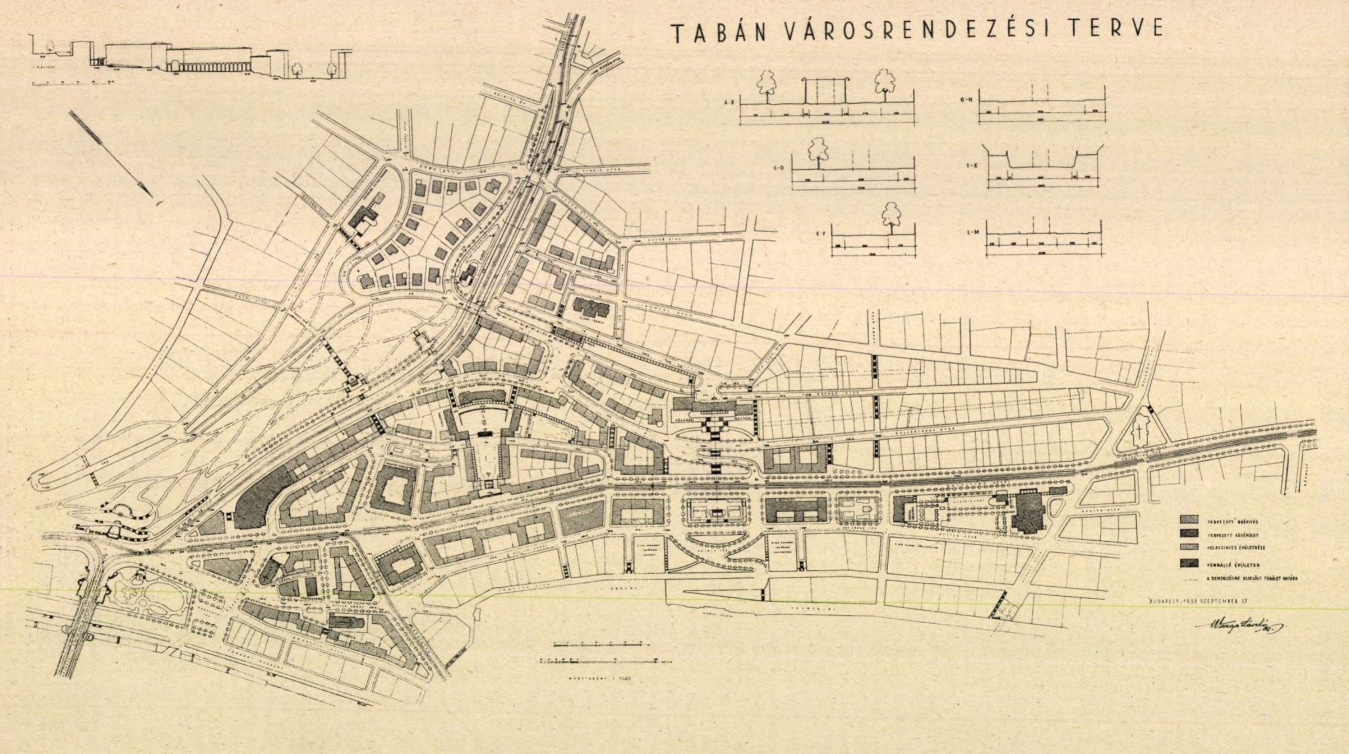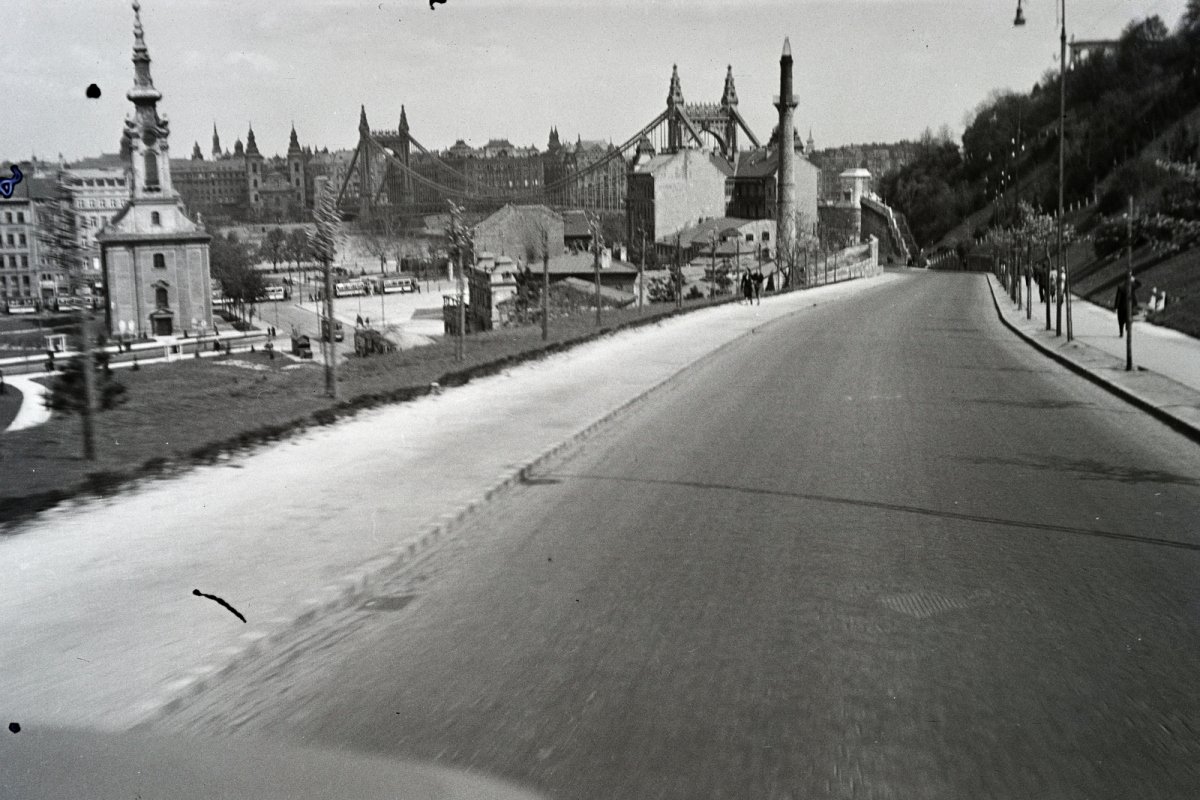When it was built, it was not even called Hegyalja Road, but a transversal road. Its role was the same as today: to connect the Erzsébet Bridge with Budaörsi Road. There were indeed no M7 or M1 highways then, and the road leading to Vienna did not go through there, but towards Óbuda. So they wanted to connect the areas beyond Gellért Hill with Pest, and this was also one of the first steps in the arrangement of Tabán. The first part of the road was completed in December 1932, and the 18 December 1932 issue of Pesti Hírlap wrote the following about the handing over of the section:
"Mayor Dr Jenő Sipőcz opened the new transversal road in Buda at 11 a.m. on Saturday, which starts at the head of Erzsébet Bridge, at the foot of Gellért Hill and leads to Sashegy. For now, the new road is only completed as far as Csend Street. This section is 700 metres long and 8 metres wide. During the construction, 20,000 cubic metres of earth were mobilised. The route is serpentine and has a maximum gradient of 5.88 per cent. The construction costs a total of 155,000 pengos. The magnificent route opened to traffic today, which crosses the entire old Tabán, was built in roughly a hundred days."

In place of Hegyalja Road, Horgony Street ran, which looked like this in 1910 (Photo: Fortepan, Hungarian Geographical Museum/Mór Erdélyi's company)
Csend Street is now part of Hegyalja Road, the section between Győri and Alsóhegy Streets was called that. The new road crossed Tabán, which was planned to be demolished, and at that time the road was only 8 metres wide, although they wanted to widen it to 10 metres, but the fill necessary for this had not yet been completed. The road connected the Erzsébet Bridge and the inner city with the increasingly integrated Buda areas beyond Gellért Hill, Sas-hegy, and the Farkasrét Cemetery. Of course, at that time, in 1932, the entire road had not yet been completed, people had to wait another year for that. The investment was also an important public work, since at that time, during the great economic crisis, unemployment soared, which was also intended to be reduced with central investments.

Horgony Street in winter, next to the Rác Bath (Photo: FSZEK Budapest Collection)
The construction of the road was part of the arrangement of Tabán, which, however, provoked a lot of controversy in the following years, because the original urban planning design, created even before World War I, did not take into account the Hegyalja Road, because at that time the western side of Gellért Hill was largely undeveloped. Therefore, because of the road, the arrangement plans for Tabán had to be reconsidered, and there was an idea – the winning design of László Warga – according to which the half-finished road should have been completely rebuilt almost immediately. Warga was not satisfied with the existing road, the 1 January 1934 issue of the journal Technika (that is, after the completion of the entire road) wrote the following:
"Tabán's significant area, which can be used precisely for a traffic-free quiet part of the city, is completely subordinated to a high-traffic road - which is not part of Tabán but serves to connect parts of the city that are further away - which brings all the unpleasant effects of this traffic, noise, dust and gasoline fumes to the whole area, depriving it of the view and the most valuable environment of the entire city, the direct connection with the southern slope of Gellért Hill. This road, like a foreign body, so perfectly walls off the Tabán Valley from the slope of Gellért Hill that it is not possible to establish a connection between the two areas either at the level of the road, below it, or above it."

The Hegyalja road in 1939 (Photo: Fortepan/No.: 23593)
But let us go back to the end of 1932 when the capital proudly handed over the half-finished road. The city saw this as an opportunity for development, the first step in the rebuilding of the poor, looked-down Tabán since Tabán was not imagined as a public park at that time, but as a modern 20th-century district filled with high-rise buildings.

Tabán's layout plan according to László Warga's design (Source: Technika, 1 January 1934)
The importance of the road is clearly shown by the fact that not long after its opening, a bus was already running on it, the permit for this was published in the 14 April 1933 issue of the Fővárosi Közlöny, according to which:
"Unlike today's route, the number 4 buses, starting from Attila Street, will travel along Mészáros Street, Pálya Street, Győri Road, Csend Street and Hegyalja Road, along the new transversal road, then they go on the Erzsébet Bridge and Eskü Road to the terminus on Apponyi Square, from here back on the same route. […] The length of the new route determined in this way is 4.3 km and the traffic here, given the 17-minute journey time, will be handled by 5 cars, with an average frequency of 7 minutes.”
The bus did not go further than Budaörsi Road, and the entire Hegyalja Road was not ready either, people had to wait another year for that, but even then, it was an important link between Sas-hegy and its surroundings and inner city Pest.
Cover photo: The lower section of Hegyalja Road in 1939 (Photo: Fortepan/No.: 212345)




































Hozzászólások
Log in or register to comment!
Login Registration